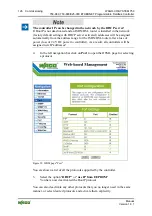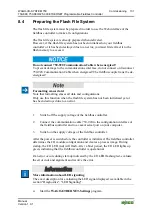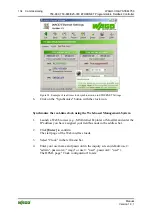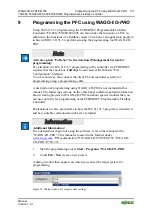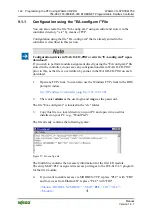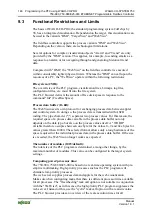
WAGO-I/O-SYSTEM 750
Programming the PFC using WAGO-I/O-PRO 139
750-880, 750-880/025-000 ETHERNET Programmable Fieldbus Controller
Manual
Version 1.0.1
Pos: 82.10 /Serie 750 (WAGO-I/O-SYSTEM)/In Betrieb nehmen/In WAGO-I/O-PRO programmieren/Controller mit dem I/O-Konfigurator konfigurieren @ 4\mod_1240907399109_21.doc @ 31617 @ 2 @ 1
9.1
Configuration using the WAGO-I/O-PRO I/O
Configurator
The I/O Configurator is a plug-in incorporated into WAGO-I/O-
PRO
for
assigning addresses to modules at a controller.
1.
In the left half of the screen for the WAGO-I/O-
PRO
interface, select the
tab
Resources
.
2.
In the tree structure click
Control system configuration
. The I/O
Configurator then starts up.
3. Expand
the
branch
Hardware configuration
in the tree structure with the
sub-branch
K Bus
.
4. Right
click
on
K Bus
or on an
I/O module
to open the menu for adding and
attaching I/O modules.
5.
By right clicking on the entry
K Bus
and the command
Attach subelement
in the menu, you can select the required I/O module from the I/O module
catalog.
(In the new versions of the I/O Configurator open the I/O module catalog by
additional clicking on the button
Add.
)
6.
Attach it to the end of the
K Bus
structure using
Insert
and then clicking
OK
. In this case, the command "Insert element" is deactivated.
7.
To insert an I/O module in front of a selected I/O module in the K Bus
structure, right click on an I/O module that has already been selected and
then click
Insert element
. In this case, the command "Insert sub-element" is
deactivated.
You can also access these commands with the
Insert
menu in the main window
menu bar. The dialog window "I/O configuration" for selecting modules is opened
both by
Attach sub-element
and by
Insert element
. In this dialog window, you
can position all the required modules in your node configuration
8.
Position all of the required I/O modules until this arrangement corresponds
to the configuration of the physical node.
Complete the tree structure in this process for each module in your hardware that
sends or receives data.


